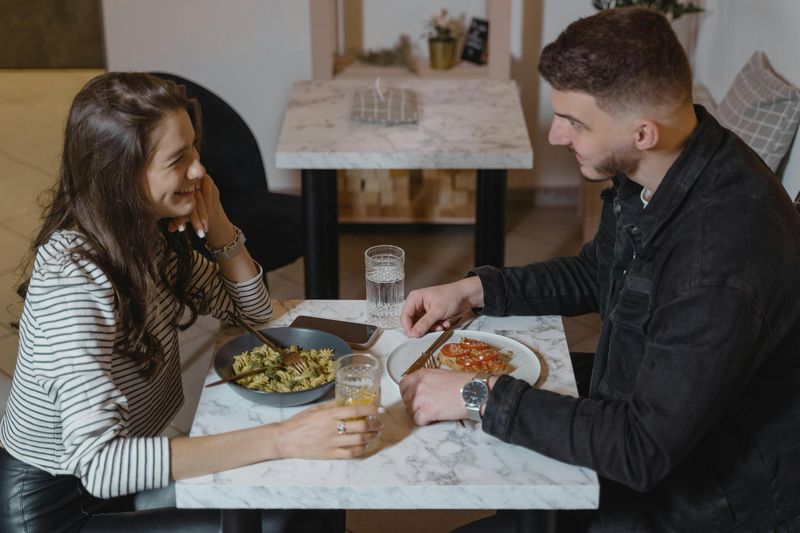12 Old-Fashioned Marriage Habits From the ’60s Therapists Swear By Today

Marriage advice from the 1960s might sound outdated, but modern therapists are bringing back some of those classic habits for good reason. Many couples today struggle with connection in our fast-paced, digital world, and surprisingly, some simple practices from decades past offer powerful solutions. These timeless habits focus on respect, communication, and intentional togetherness—principles that never go out of style.
1. Saying “Please” and “Thank You” Like You Mean It

Genuine gratitude creates emotional warmth that strengthens any relationship. When you sincerely thank your partner for small acts—making breakfast, taking out the trash, or listening after a rough day—you’re acknowledging their effort and care.
Therapists emphasize that these simple courtesies prevent partners from feeling taken for granted. Saying “please” shows respect for your spouse’s time and energy, while heartfelt “thank yous” build appreciation over time.
Couples who practice daily gratitude report feeling more valued and connected. This habit costs nothing but creates a foundation of kindness that can weather any storm.
2. Having Your Own Friends (Seriously!)

Your marriage shouldn’t swallow your entire social life. Maintaining friendships outside your partnership actually strengthens the relationship by preserving your sense of self and preventing codependency.
When both partners have their own friend groups, they bring fresh perspectives and energy back home. You’ll have new stories to share, different experiences to discuss, and personal growth that enriches your connection.
Therapists note that couples who support each other’s independent friendships report higher satisfaction levels. Balance is key—your spouse should be your best friend, but not your only friend.
3. Not Going to Bed Angry

Going to sleep with unresolved anger allows resentment to take root overnight. This classic advice encourages couples to address conflicts before they fester, even if it means staying up a bit later.
Resolution doesn’t mean one person wins—it means finding common ground or agreeing to disagree respectfully. Sometimes a late-night snack together can soften tensions and create space for honest dialogue.
Marriage counselors confirm that couples who resolve conflicts promptly maintain stronger emotional intimacy. The goal isn’t perfection but preventing small disagreements from becoming relationship-threatening issues over time.
4. Having Regular Date Nights (Even If It’s Just TV Dinners)

Relationships easily slip into autopilot when life gets busy with work, kids, and responsibilities. Setting aside intentional time together—whether fancy dinners out or simple TV dinners at home—keeps romance and connection alive.
The key is consistency, not extravagance. Weekly date nights create something both partners can anticipate, breaking the monotony of daily routines.
Marriage therapists stress that couples who prioritize regular one-on-one time report greater happiness and lower divorce rates. Even thirty minutes of undivided attention can reignite the spark that brought you together originally.
5. Holding Hands — Even in Public

Physical touch releases oxytocin, the bonding hormone that deepens emotional connection between partners. Something as simple as holding hands while walking or watching TV reinforces your partnership daily.
Public displays of affection don’t need to be elaborate—a gentle hand-hold signals unity and commitment. This small gesture reminds both of you that you’re a team facing the world together.
Research backs up what our grandparents knew instinctively: regular physical affection increases relationship satisfaction. Therapists encourage couples to incorporate touch into their daily routines for lasting benefits.
6. Appreciating the Little Things

Big romantic gestures are wonderful, but daily appreciation for small acts builds lasting happiness. Noticing when your partner makes your favorite coffee, folds the laundry, or fills your gas tank shows you’re paying attention.
Expressing gratitude for these everyday kindnesses creates a positive feedback loop. Your partner feels seen and valued, encouraging them to continue showing love in practical ways.
Therapists observe that couples who celebrate small victories together cultivate deeper mutual appreciation. Recognizing ordinary efforts transforms mundane routines into meaningful expressions of care and commitment.
7. Limiting the Complaints (But Not the Honesty)

Constant criticism erodes relationships faster than almost anything else. While honesty remains essential, finding the balance between truthfulness and kindness prevents your home from becoming a battlefield of complaints.
Before voicing frustration, ask yourself if it’s constructive or just venting negativity. Choose your battles wisely and frame concerns with empathy rather than accusation.
Marriage counselors teach that supportive communication strengthens bonds while excessive complaining breeds resentment. When you do need to address issues, focus on solutions together rather than dwelling on problems alone.
8. Celebrating Milestones — Big and Small

Acknowledging achievements—whether job promotions, anniversaries, or simply making it through a tough week—fosters shared joy and teamwork. Celebrations don’t require elaborate parties; sometimes a high-five or special dessert suffices.
Recognizing milestones together creates positive memories that strengthen your emotional bond. These moments remind you that you’re partners cheering each other on through life’s journey.
Therapists note that couples who celebrate regularly develop stronger emotional resilience during difficult times. Shared happiness becomes the foundation that sustains relationships when challenges inevitably arise down the road.
9. Keeping Individual Hobbies Alive

Pursuing personal passions keeps each partner fulfilled and energized, which contributes to a more vibrant and balanced relationship. Back in the ’60s, husbands often had their workshops or bowling leagues, while wives joined book clubs or gardening groups.
This wasn’t about avoiding each other—it was about bringing fresh energy back home. When you nurture your own interests, you become a more interesting and happier person.
You have stories to share, accomplishments to celebrate, and a sense of identity beyond just being someone’s spouse. Modern therapists encourage this because it prevents codependency and keeps the spark alive. Having your own thing makes coming back together feel exciting rather than suffocating.
10. Letting Go of Perfection (and Laughing About It)

Embracing imperfection and humor helps couples navigate challenges gracefully and strengthens emotional resilience. Marriages in the ’60s weren’t picture-perfect despite what old sitcoms showed us. Real couples knew how to laugh when dinner burned or the car broke down again.
They didn’t expect flawless lives, so they rolled with the punches. Modern therapists see this attitude as essential for long-term happiness.
When you stop demanding perfection from yourself and your partner, you create room for authenticity. Mistakes become funny stories instead of relationship-ending disasters. Laughter releases tension and reminds you that you’re on the same team. Life gets messy, but sharing a good laugh about it makes everything more bearable and brings you closer together.
11. Being Present at Mealtime

Shared meals without distractions encourage mindful connection, meaningful conversation, and emotional intimacy. Families in the 1960s gathered around the table each evening, and phones weren’t buzzing every two seconds. That simple routine created space for real talk.
Today’s therapists recommend reclaiming mealtime as sacred couple time. Turn off the TV, silence your phones, and actually look at each other. Ask about your partner’s day and truly listen to the answer.
These moments build trust and understanding in ways that texting never could. Food tastes better when shared with genuine attention. Even just fifteen minutes of distraction-free dining can strengthen your bond and remind you why you fell in love in the first place.
12. Apologizing with Heart (and Sometimes Pie)

Sincere apologies rebuild trust and emotional safety, showing maturity, humility, and a genuine commitment to growth. In the 1960s, making amends often involved a heartfelt “I’m sorry” paired with a thoughtful gesture like baking someone’s favorite dessert. The pie wasn’t a bribe—it was a symbol of effort and care.
Therapists today emphasize that real apologies require vulnerability and action, not just empty words. Admitting when you’re wrong takes courage, but it demonstrates respect for your partner’s feelings.
Adding a meaningful gesture shows you’re willing to put in effort to make things right. Whether it’s pie, flowers, or simply quality time, the combination of sincere words and thoughtful actions heals wounds faster than pride ever could.

Comments
Loading…